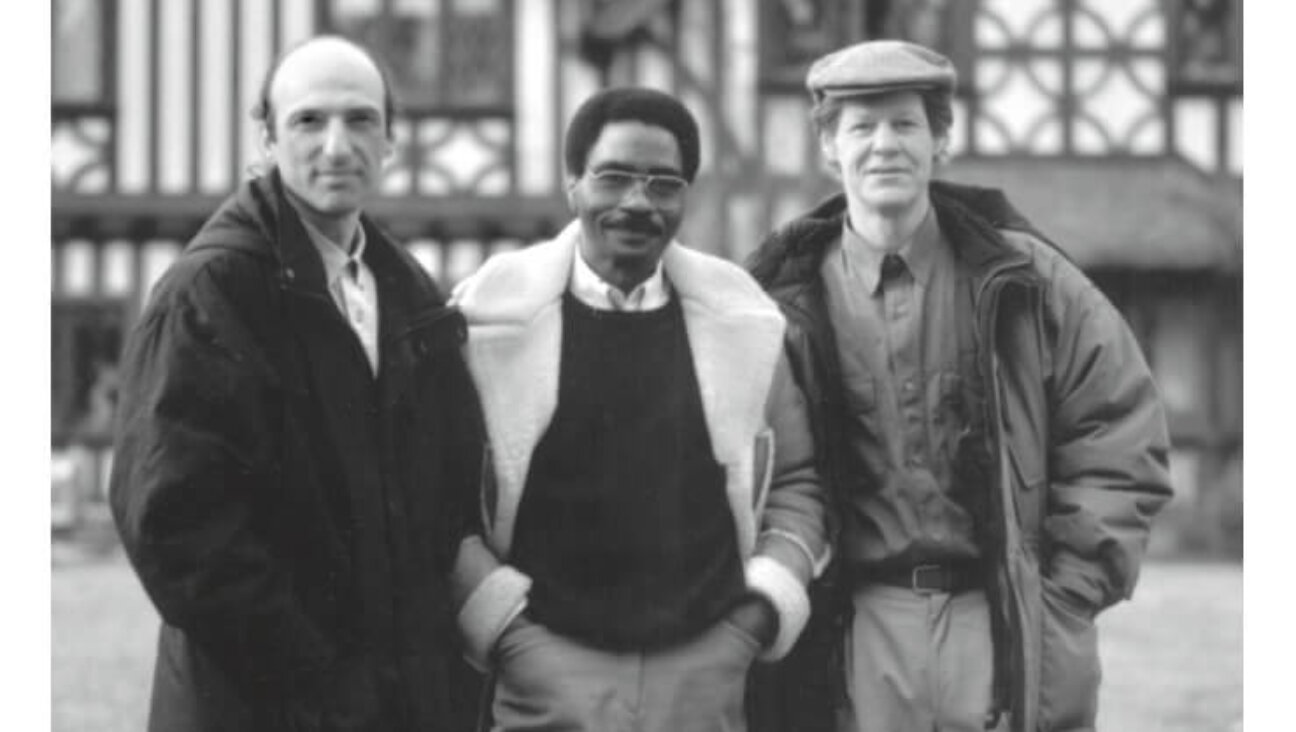May 21, 2004
Teach the Children Well
After reading the April 16 account of Holocaust education teachers in New Jersey and Iowa, I found that I could not simply turn the page (“Two Holocaust-Ed Teachers Find That Empathy Is Often Born of Adversity”). My reasons were many and varied.
As a combat infantryman in France and Germany during World War II, I was a witness to the reality of what happened. In addition, my postwar experiences reflected those of teacher Barbara Pordy, such as when one parent asked, “When are you going to get over it?” I used to respond to remarks like those by asking for suggestions as to just how I should go about getting over it. I was curious about how Pordy dealt with it. The article, unfortunately, doesn’t say.
Part of what it does say is confusing. I was so moved by the account that I located the book used in the course: “The Upstairs Room,” by Johanna Reiss. While it was intended for young people, 12 years old and up, I found the writing to be sensitive and appealing to anyone who reads.
What I did not find was a chapter titled “Breasts.” There were, in fact, no chapter titles at all. Nor was it likely that the story of a 10-year- old and her older sister who were hidden away in a closet for more than two years would focus on anyone’s sexual awakening. So where did this attack by a colleague of Pordy’s, supported by the administration, come from? I could find nothing to black out, tear out or in any way censor. The overall story is more terrible and frightening than any single word in it. Is it true, as that parent charged, that “we tend to exaggerate”?
Perhaps I had the wrong book. The Forward refers to the work as an “historical novel.” Elie Wiesel, on the cover blurb, refers to it as an “account as important in every aspect as the one bequeathed to us by Anne Frank.”
This comment triggered a memory. As the only Jew in a local theater group, the first authorized to present “The Diary of Anne Frank,” I was witness to the transformation of an upper-middle-class Gentile cast into a bunch of fearful Jews living in each other’s faces. For six weeks of rehearsal, in a tiny space the size of the attic, these people became my people. The performance, which ran for two weekend nights, drew an emotional response from both the players and the audience.
At the closing, with the applause still ringing in our ears, our director announced that Otto Frank was in the country on a speaking tour on behalf of the Anne Frank Foundation. If we were willing to do an extra performance as a fund-raiser, he would attend. Before I could voice my own enthusiasm for the idea, an amazing thing happened. Everyone went back to being a suburban gentile. “Who are these people?” “What are they after?” “Why should we do anything for an organization that isn’t local?”
Holocaust educators Barbara Pordy and David Wendt have the right idea: Start with the kids. With many adults, the message will come too late.
Irv Zuckerman
Larchmont, N.Y.
Tradition Abhors War
Opinion columnist David Klinghoffer has once again proven the adage, “A little knowledge is a dangerous thing.” Judaism, as Klinghoffer notes in his April 23 Disputation column, means “something definite” — though not just anything he wants it to mean (“Kristol Clear About War”). While Judaism is, of course, a biblical religion, the meaning of the Bible for Jews is mediated through the rabbinic tradition. Scholars have long noted that while the book of Joshua is one of the bloodiest books in the Bible, and one which seems to license rampant destruction and genocide, the rabbinic tradition retells the story so that the values instilled are the importance of suing for peace and promoting compromise and using violence as a last resort.
While it is true that the Jewish people demanded a king, Samuel, the prophet of God, rebukes them for this wish. It is specifically because kings war at will and confuse their will with the will of God that Samuel is unhappy with the Israelites’ demand.
Maimonides refers to war as one of the great evils that people perpetrate — even when it is justified. And here is the crux: While Maimonides says that a king is allowed to start a defensive war, there must be an imminent threat that serves as the catalyst for the war — not cooked intelligence and fantasies of revenge.
The major thrust of Jewish tradition and values is not, as Klinghoffer would have it, glorification of war and bloodletting, but rather the “squeamish” abhorrence of war, to use Klinghoffer’s description.
In the words of Rabbi Kook, the first Ashkenazic chief rabbi of Israel (then Palestine), in his essay entitled “War”: “It is not worthwhile for Jacob [i.e., the Jewish people] to engage in nationhood at a time when it must be a bloody business, at a time when it demands the skills of the evil arts.” War, in Judaism’s eyes, is always seen as an evil art, even when justified, but especially when it is premised on lies and fantasies of empire.
Aryeh Cohen
Chair, Rabbinic Studies
Ziegler School of Rabbinic Studies
University of Judaism
Los Angeles, Calif.
Right or Writing Blind?
I have nothing but the greatest respect for arts and culture writer Eric Alterman, and I sympathize with his discomfort over his entanglement, unwanted and unjustly imposed, with David Horowitz (“From Seeing Red to Writing Blind,” May 14). Horowitz is indeed a charlatan engaged in vituperative, worthless self-justification. But perhaps even someone as outlandish as Horowitz can get some things right.
One could, for example, object to the language, but not the general interpretive thrust, of Horowitz’s statement that Noam Chomsky is a “pathological” “ayatollah of anti-American hate.” And, with what we now know about the history of the Soviet Union, is it really so far off the mark, as Alterman implies by quoting Isaac Deutscher, to “see no difference between Nazism and Communism?”
Gerald Sorin
Director, Jewish Studies Program
SUNY New Paltz
New Paltz, N.Y.
Eric Alterman’s review of David Horowitz’s new book is beyond belief.
It is not a book review. It is a personal character assassination. Nothing less.
He doesn’t discuss a single thought presented — just insults and hate.
Ira Salomon
Hackensack, N.J.
Fables No Kids’ Play
Although Eliezer Shtaynbarg also wrote for children, the fables contained in “The Jewish Book of Fables” were written for adults, not children, as the reviewer of my translation of Shtaynbarg erroneously contends (“These Tricks Are Not Just for Kids,” April 23).
The frequent biblical, talmudic and midrashic references in the fables; the folk expressions; the sophisticated Jewish and secular topics; the difficult vocabulary; the protagonists who are not either good or bad as in children’s tales, but frustratingly complex in their behavior; the often gloomy endings; the wit and the puns — all these are directed at mature, knowledgeable grown-ups and not at children, for whom these fables would hardly be accessible. The fables were read by adults and were performed for them at literary evenings.
I agree with the book reviewer’s criticism of the title. My choice was “The Bayonet and the Needle and Other Yiddish Fables,” but the sponsoring Teitelboim Foundation had the final word.
I appreciate the reviewer’s praise for my translation but would offer that what she calls “tortured inversions” in English are not done for the sake of the English rhyme, but reflect the playful and inventive flexibility of Shtaynbarg’s Yiddish sentence structure, which includes inversions.
Curt Leviant
Edison, N.J.
Face Changing Faces
While we share the American Jewish Committee’s concern for future Jewish demographics, we feel that opinion writer David Harris left out some of the most important statistics because he did not look at the Jewish community’s own changing faces (“Jewish Faces in a Changing America: The Numbers Speak for Themselves,” May 14).
Not mentioned was that currently more than one-third of all married Jewish households are intermarried, a percentage that will continue to grow until it is more than half.
That coming majority is in some ways already with us, considering that the latest National Jewish Population Study found that among college students who consider themselves Jewish, only 48% come from in-married households.
Alongside “building ties with other communities,” we would love to see organizations such as AJCommittee start at home; there are literally millions of non-Jewish Americans who already live within Jewish households. Intermarried families are the fastest-growing segment of the Jewish community, and it is they who will most determine the size of the Jewish community for decades to come.
If the future strength of the Jewish community does indeed rest in some measure on our demographic balance — affecting the support we give to all our important causes, including the state of Israel — then we have a moral imperative to create campaigns of welcoming toward those intermarried families who have opted out, or who have been pushed out, of Jewish participation.
Rabbi Kerry Olitzky
Executive Director
Jewish Outreach Institute
New York, N.Y.
A message from our CEO & publisher Rachel Fishman Feddersen

I hope you appreciated this article. Before you go, I’d like to ask you to please support the Forward’s award-winning, nonprofit journalism during this critical time.
We’ve set a goal to raise $260,000 by December 31. That’s an ambitious goal, but one that will give us the resources we need to invest in the high quality news, opinion, analysis and cultural coverage that isn’t available anywhere else.
If you feel inspired to make an impact, now is the time to give something back. Join us as a member at your most generous level.
— Rachel Fishman Feddersen, Publisher and CEO























